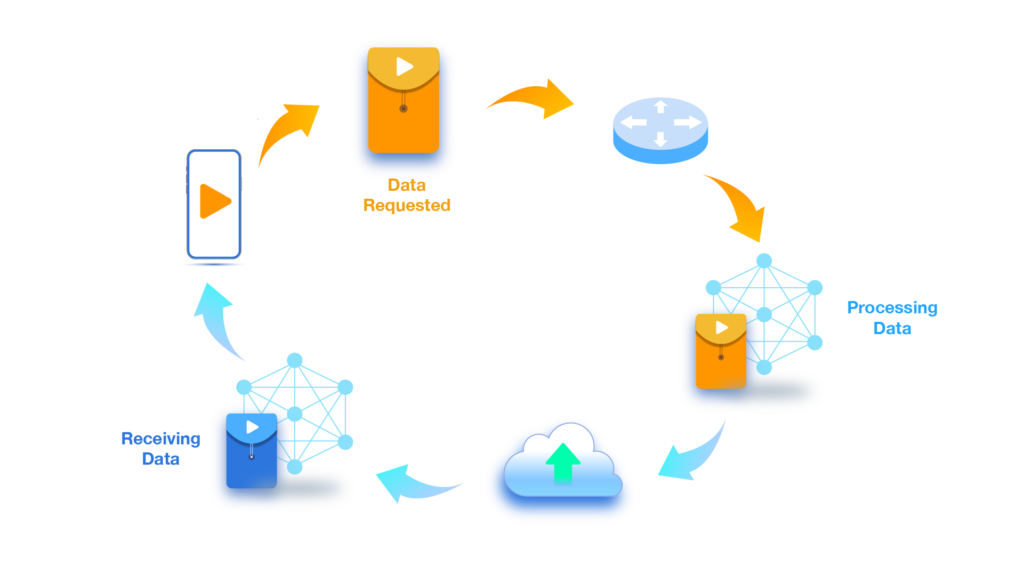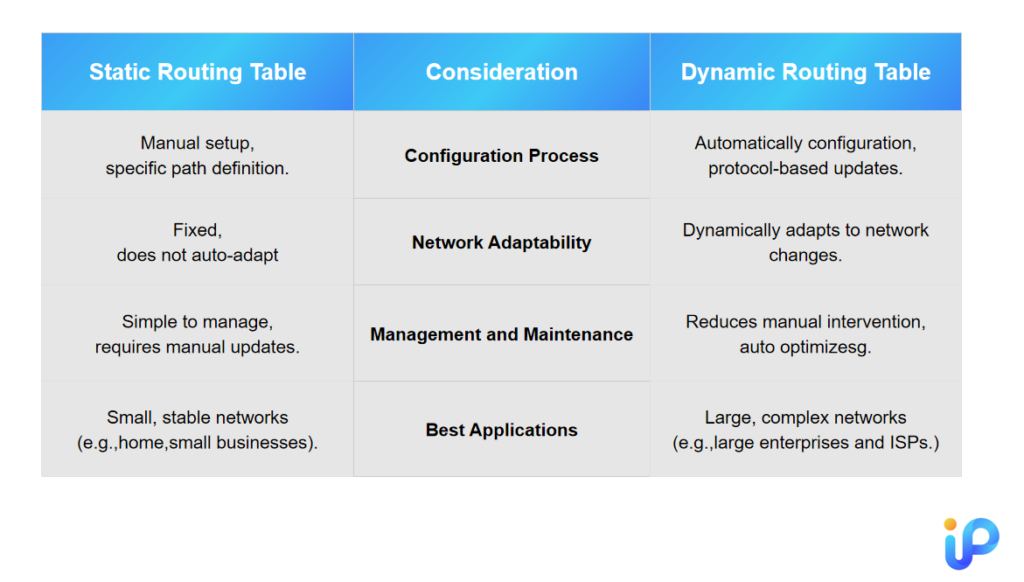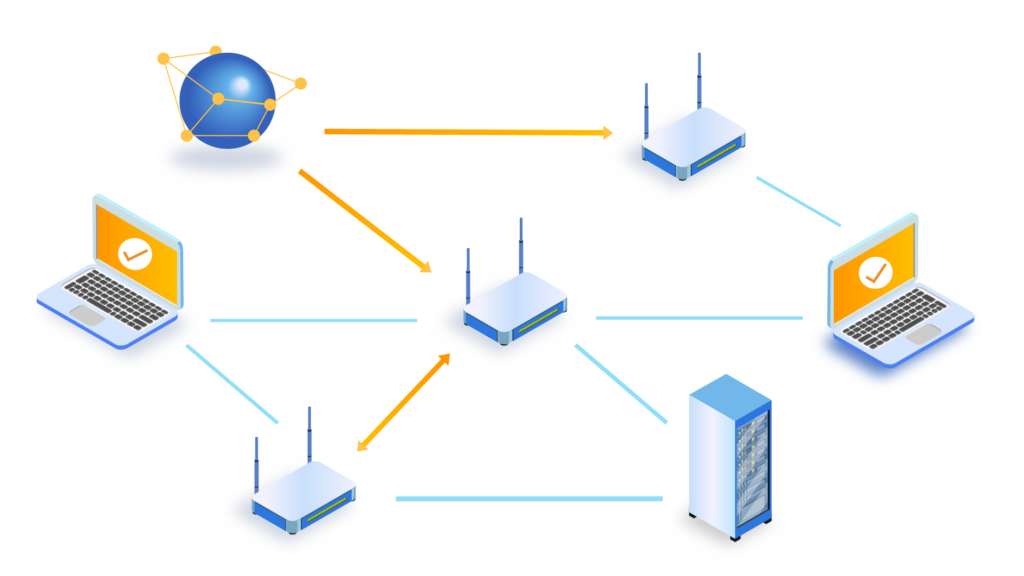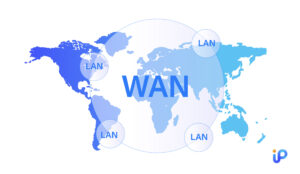10 Min Read |15 Feb 2024 | Key Words: Network Routing, Routing principle, Routing table, Routing Protocols
Are you fascinated by the complexity of networking and its capabilities?
Let’s explore the captivating world of routers, routing tables and essential routing protocols. We’ll embark on a journey to unravel the core concepts and uncover the true potential of this dynamic field.
Routing operates on the principle of selecting the optimal path for data packets to travel from the source computer to the destination computer, enabling efficient network communication through the use of routing tables and dynamic selection mechanisms. The reliability of your internet connection depends on making wise routing decisions. To achieve this, advanced protocols are used to ensure swift and uninterrupted delivery of data packets to their intended destinations.
This article serves as an introduction to understanding the routing process within computer networks.It demystifies the concept by providing insights into the essence of routing, its functionality, and delving into the variety of routing protocols that make the entire system feasible.
Introduction to Network Routing
A computer network consists of many machines (called nodes) and the paths or links that connect these nodes. Routing is the process of selecting the fastest or shortest path between these nodes to avoid unnecessary interference.
Taking IP network as an example, this is like a car navigation system. When you drive somewhere, the navigation system plans the best route based on real-time traffic conditions. Likewise, in computer networks, IP routers examine the destination IP address of data packets and determine the best path. Just like a navigation system avoids congestion and ensures you reach your destination smoothly, a router ensures that data packets travel efficiently and seamlessly.

Precisely because of the existence of routers, the efficiency of Internet network communication has been greatly improved.
How does network routing work?
It’s the easiest way to explain IP routing by explaining the steps of how a data packet takes its route from the origin computer to the destination.
Step 1: User device creates and sends data packet
When you perform operations on your computer, such as sending emails or browsing the web, the information is divided into data packets and assigned specific IP addresses. These packets are initially transmitted within your LAN and received by the router for further forwarding.
Step 2: The router receives and processes the packet
The nearest network router serves as a relay station for the data packets sent from your device. It receives data packets and analyzes the IP address information in them, determining the most efficient way to forward them to the next destination.
Step 3: Router Decision and Path Selection
In this phase, the router uses a routing table to select the optimal path for the packet. Since a packet’s journey often involves multiple routers, each router dynamically selects the best path based on the current network conditions, ensuring smooth progress toward the destination. This process resembles a well-coordinated relay race, with each router acting as a relay point.
Step 4: Data reaches the target device
After a series of forwarding and dynamic path adjustments, the data packet finally reaches its designated destination device. If the data packets are sent in fragments, the target device will reassemble the data packets and restore them into complete information, such as web pages or files.

In real-life scenarios, the steps of network routing can be observed when you initiate actions like playing a movie. Let’s see how these steps unfold:
Step 1: Data Generation and Packet Creation:
Your device generates data requests, which are then encapsulated into data packets.
Step 2: Router Processing:
These packets are sent to the router in your home, where it quickly analyzes the best path to efficiently deliver the request to the streaming server.
Step 3: Multi-router Relay:
The data packets may pass through multiple routers, with each router dynamically selecting the optimal path based on the network conditions.
Step 4: Server Interaction and Response:
Eventually, the data packets reach the server, and the movie content is sent back to your device in a similar manner, completing the process and fulfilling your wish to watch the movie.
In summary, your action of selecting and playing a movie triggers a sequence of network routing processes, involving packet creation, router analysis, multi-router relay, and server interaction, resulting in the delivery of the desired content to your device.
Routing Tables: The Key to Efficient Network Navigation
Routing tables serve as essential maps stored on network devices, like routers, guiding data packets through the network. These tables hold vital information that directs packets from their source to their intended destination.

The routing table consists of multiple entries, each containing key information:
- Destination network address: Specifies the intended destination for the data packet.
- Next hop address: Indicates the next network device for the packet to traverse.
- Subnet mask: Defines the network and host portions of the network address.
When a device sends a data packet, it looks at the routing table to find an entry matching the destination address. The packet is then forwarded to the next device based on the table’s information, repeating the process until it reaches its destination. According to AWS, to handle network traffic, a router consults its routing tables millions of times each second.
It’s important to note that routing tables come in two primary types to cater to different network requirements: static and dynamic. These tables play a vital role in enabling efficient and reliable network communication.

Routers: The traffic hub of the network
The router serves as the “traffic hub” in the network by effectively manages network traffic and enables multiple devices to share network connections.
- Traffic Management:
Routers act as “intelligent splitters” by directing data flow between different networks. Similar to a traffic policeman, routers use destination IP addresses to guide data packets to the correct network direction and destination.
- Device Connectivity:
Routers connect multiple terminal devices, allowing smartphones, laptops, and tablets to access the Internet through a single connection. This flexibility and intelligence make routers an essential part of modern networks.
Routing protocols: the key to information transmission
A routing protocol is a set of rules used in computer networks to determine the path of data packets, ensuring that information reaches the recipient efficiently and accurately from the sender.
Several major network routing protocols and their role in data transmission:
- Transmission Control Protocol (TCP) and Internet Protocol (IP):
TCP/IP is the foundation of network communication. TCP ensures the accurate transmission and reassembly of data packets, while the IP protocol delivers packets to the correct address.
- Open Shortest Path First (OSPF):
OSPF is a dynamic routing protocol commonly used in large networks determining the shortest path by constructing a network topology map.
- Border Gateway Protocol (BGP):
BGP facilitates communication between the core routers of the internet, detecting routing loops and is secured by RPKI
- Routing Information Protocol (RIP):
RIP is a simple routing protocol suitable for small to medium-sized networks, using hops count as the criterion for path selection.
- Intermediate System to Intermediate System (IS-IS):
IS-IS is a link-state routing protocol used for large and complex networks, efficiently handling a significant volume of routing information through its hierarchical structure.
Conclusion
The core of network routing is to find the fastest and most efficient path, with routers playing a crucial role in determining packet paths. Routers use routing tables (lists of IP prefixes) to make these decisions.Data packets often traverse multiple routers, each responsible for selecting the best network for delivery.Routing tables are constantly updated through different routing protocols, which share information between routers. Throughout this process, efficient routing is crucial to the proper functioning of the Internet.
Want to know more? Feel free to click here to learn more




